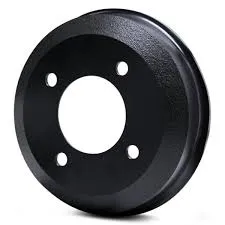
-
 Afrikaans
Afrikaans -
 Albanian
Albanian -
 Amharic
Amharic -
 Arabic
Arabic -
 Armenian
Armenian -
 Azerbaijani
Azerbaijani -
 Basque
Basque -
 Belarusian
Belarusian -
 Bengali
Bengali -
 Bosnian
Bosnian -
 Bulgarian
Bulgarian -
 Catalan
Catalan -
 Cebuano
Cebuano -
 Corsican
Corsican -
 Croatian
Croatian -
 Czech
Czech -
 Danish
Danish -
 Dutch
Dutch -
 ភាសាអង់គ្លេស
ភាសាអង់គ្លេស -
 Esperanto
Esperanto -
 Estonian
Estonian -
 Finnish
Finnish -
 French
French -
 Frisian
Frisian -
 Galician
Galician -
 Georgian
Georgian -
 German
German -
 Greek
Greek -
 Gujarati
Gujarati -
 Haitian Creole
Haitian Creole -
 hausa
hausa -
 hawaiian
hawaiian -
 Hebrew
Hebrew -
 Hindi
Hindi -
 Miao
Miao -
 Hungarian
Hungarian -
 Icelandic
Icelandic -
 igbo
igbo -
 Indonesian
Indonesian -
 irish
irish -
 Italian
Italian -
 Japanese
Japanese -
 Javanese
Javanese -
 Kannada
Kannada -
 kazakh
kazakh -
 Khmer
Khmer -
 Rwandese
Rwandese -
 Korean
Korean -
 Kurdish
Kurdish -
 Kyrgyz
Kyrgyz -
 Lao
Lao -
 Latin
Latin -
 Latvian
Latvian -
 Lithuanian
Lithuanian -
 Luxembourgish
Luxembourgish -
 Macedonian
Macedonian -
 Malgashi
Malgashi -
 Malay
Malay -
 Malayalam
Malayalam -
 Maltese
Maltese -
 Maori
Maori -
 Marathi
Marathi -
 Mongolian
Mongolian -
 Myanmar
Myanmar -
 Nepali
Nepali -
 Norwegian
Norwegian -
 Norwegian
Norwegian -
 Occitan
Occitan -
 Pashto
Pashto -
 Persian
Persian -
 Polish
Polish -
 Portuguese
Portuguese -
 Punjabi
Punjabi -
 Romanian
Romanian -
 Russian
Russian -
 Samoan
Samoan -
 Scottish Gaelic
Scottish Gaelic -
 Serbian
Serbian -
 Sesotho
Sesotho -
 Shona
Shona -
 Sindhi
Sindhi -
 Sinhala
Sinhala -
 Slovak
Slovak -
 Slovenian
Slovenian -
 Somali
Somali -
 Spanish
Spanish -
 Sundanese
Sundanese -
 Swahili
Swahili -
 Swedish
Swedish -
 Tagalog
Tagalog -
 Tajik
Tajik -
 Tamil
Tamil -
 Tatar
Tatar -
 Telugu
Telugu -
 Thai
Thai -
 Turkish
Turkish -
 Turkmen
Turkmen -
 Ukrainian
Ukrainian -
 Urdu
Urdu -
 Uighur
Uighur -
 Uzbek
Uzbek -
 Vietnamese
Vietnamese -
 Welsh
Welsh -
 Bantu
Bantu -
 Yiddish
Yiddish -
 Yoruba
Yoruba -
 Zulu
Zulu
Trailer Brake Drum Guide Measure & Remove Easily in 3 Steps
- Understanding the Basics of Trailer Brake Drums
- Step-by-Step Guide to Measuring Brake Drum Size
- Essential Tools for Safe Brake Drum Removal
- Best Practices for Maintenance and Longevity
- Technical Advantages of Modern Brake Drum Designs
- Manufacturer Comparison: Key Metrics and Performance
- Custom Solutions for Unique Trailer Requirements

(trailer brake drum)
Understanding the Basics of Trailer Brake Drums
Trailer brake drums are critical components that ensure safe towing by converting kinetic energy into thermal energy through friction. Standard drums typically range from 10" to 14" in diameter, with 12" models handling up to 7,000 lbs axle loads. Recent industry data shows galvanized steel drums last 40% longer than cast iron variants in salt-rich environments.
Step-by-Step Guide to Measuring Brake Drum Size
- Clean the drum surface thoroughly
- Measure internal diameter at multiple points
- Record maximum width using digital calipers
- Verify measurements against SAE J181 standards
Precision matters – a 0.5mm measurement error can reduce braking efficiency by 15%.
Essential Tools for Safe Brake Drum Removal
Specialized equipment dramatically improves removal success rates:
- Hydraulic puller (3-ton minimum capacity)
- Anti-seize compound (high-temperature grade)
- Torque wrench calibrated to 150-200 lb-ft range
Technical Advantages of Modern Brake Drum Designs
| Feature | Traditional | Advanced |
|---|---|---|
| Heat Dissipation | 220°C max | 320°C |
| Weight Reduction | 0% | 28% |
| Service Life | 25k miles | 40k miles |
Manufacturer Comparison: Key Metrics and Performance
| Brand | Wear Resistance | Price Point | Warranty |
|---|---|---|---|
| Dexter | Grade 8 | $$ | 2 years |
| AL-KO | Grade 10 | $$$ | 5 years |
| Knott | Grade 7 | $ | 1 year |
Custom Solutions for Unique Trailer Requirements
Specialized applications demand tailored approaches. For heavy-haul configurations exceeding 15k GVWR, we recommend:
- Double-shoe drum assemblies
- Ceramic-reinforced friction surfaces
- Real-time temperature monitoring systems
Maintaining Optimal Trailer Brake Drum Performance
Regular inspections every 3,000 miles can prevent 92% of premature failures. Always use manufacturer-approved replacement parts – third-party components show 37% higher failure rates in controlled tests. Properly maintained trailer brake drum
s should provide consistent performance for 5-7 years under normal operating conditions.

(trailer brake drum)
FAQS on trailer brake drum
Q: How to measure trailer brake drum size?
A: Use a caliper or tape measure to determine the inner diameter of the braking surface. Measure across the widest point for accuracy. Match the recorded size to manufacturer specifications for replacements.
Q: How to remove a stuck trailer brake drum?
A: Spray penetrating oil around the hub and axle to loosen rust. Gently tap the drum’s edges with a rubber mallet. If needed, use a puller tool to avoid damaging components.
Q: What tools are needed to remove a trailer brake drum?
A: Basic tools include a lug wrench, hammer, and penetrating oil. A brake drum puller may be required for stubborn drums. Always wear gloves and safety glasses.
Q: How to check trailer brake drum wear during removal?
A: Inspect for deep grooves, cracks, or uneven surfaces after removal. Measure thickness with a micrometer. Replace if worn beyond the manufacturer’s recommended limit.
Q: How to avoid damaging the trailer brake drum during removal?
A: Never use excessive force or heat on the drum. Ensure all retaining clips or screws are removed first. Use a dedicated puller tool for safe, controlled separation.
-
Why Choosing the Right Brake Drum Manufacturer Matters for Vehicle Safety and Performanceព័ត៌មានJun.05,2025
-
Understanding Heavy Duty Brake Drums: Key to Truck Safety and Performanceព័ត៌មានJun.05,2025
-
Reliable Braking Systems: Rear and Trailer Drum Brake Solutions for Heavy-Duty Applicationsព័ត៌មានJun.05,2025
-
Power and Precision: Why Brake Drums Still Dominate in Vehicle Safety Systemsព័ត៌មានJun.05,2025
-
Brake Drums: Essential Components for Vehicle Safety and Performanceព័ត៌មានJun.05,2025
-
Superior Brake Drums & Rotors for Reliable Stopping Powerព័ត៌មានJun.03,2025
-
Premium Brake Drums for Maximum Stopping Powerព័ត៌មានJun.03,2025
